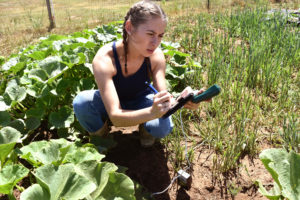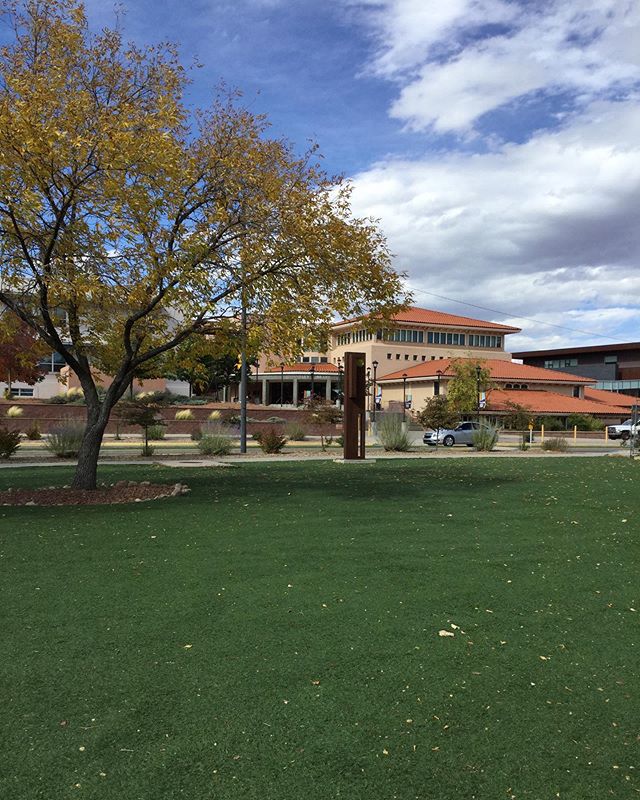
Photo credit: Margaret McKinney/Highlands University
October 18, 2021
Students in the Highlands forestry class Ecosystems and Humans are volunteering in the Las Vegas Community Garden this fall to acquire a first-hand understanding of the reciprocal relationship between humans and the rest of the natural world.
The class, which is taught by professor Tomasz Falkowski, will help students build skills they can use in future employment, network with community partners, and connect outdoor service learning with students’ personal experiences.
The Las Vegas Community Garden, also known as the Peña Community Garden, is a new garden on a plot of land donated by Tom and Tina Clayton. MainStreet Las Vegas is spearheading the project and working alongside community partners like the Hermit’s Peak Watershed Alliance and the 100% Community.
Falkowski said the class is an introductory course in the department of forestry and his focus is on giving students place-based and service-based learning opportunities. He also said the class aligns with other sustainability efforts underway at Highlands.
“I wanted to really focus on environmental issues close to home,” said Falkowski. “The ways humans interact with the environment is often painted in a very negative way, and community gardens offer a wonderful way in which humans can positively relate to their environment and one another.”
The community garden plot is located on the corner of Douglas Avenue and Railroad Avenue and was until recently an abandoned lot filled with junk cars. Falkowski said his students have been involved in the initial work of cleaning up the site and preparing the soil and beds.
“When we prepared the soils and raised beds students learned about the ways soil organic matter influences soil properties and soil health, and they learned about the importance of organic matter in soil and all the benefits it provides,” said Falkowski. “In the coming weeks we’re going to be planting a crop of garlic and we’ll be learning about plant propagation and plant ecology.”
According to Falkowski, students often learn better when they can get their hands dirty and see for themselves the practical applications of the learning objectives they are studying. He points out that while some students may perform well academically, real learning often happens in the field.
“Service-based engaged learning tends to level the playing field,” said Falkowski. “Place-based learning, in particular, makes it relevant to the students’ own experiences, which makes them feel seen and empowers them to see their personal experiences as something that can contribute to the learning process instead of some kind of hurdle that they have to overcome.”
In addition to enhanced learning, Falkowski said place-based learning encourages good citizenship because it helps students become aware of local issues and it helps them develop tangible skills they can add to their resumes and use in future careers.
“They are building professional networks as well because we’re coordinating with a lot of organizations that work in the area,” said Falkowski. “One of the goals with the garden is that it creates a shared green space where the community can come together and work towards cultivating relationships with one another and with the environment.”
Falkowski said community gardens offer a tangible way to understand how nature and environmental systems contribute to human well-being. Studying groundwater recharge, carbon sequestration, shade, and air pollution mitigation are all topics his students can observe in the garden while building relationships and learning to plant vegetables.
“We depend upon ecosystems and the health and integrity and resilience of those ecosystems for basically everything,” said Falkowski. “One thing I really want to do is to highlight ways we can cultivate relationships of reciprocity into our relationship with nature and integrate our human and ecological communities.”
Falkowski said community gardens offer a good model for the ways humans and the rest of the natural world can coexist.
“I want my students to understand soils and plant morphology,” Falkowski said. “But for me, community gardens offer a way to go beyond stewardship so we can expand this community to involve other living things and ecosystems that we depend upon.”

